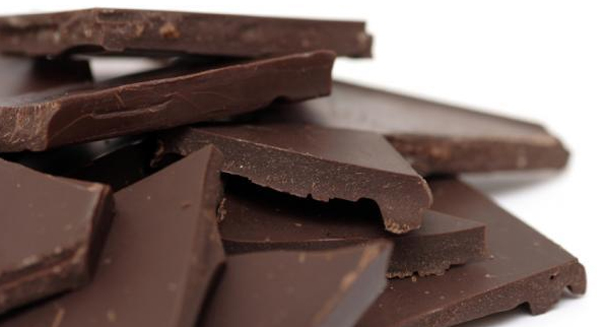
A new process has been developed to help chocolate companies reduce the fat bloom process that makes chocolate look old.
Because chocolate develops what is called “fat bloom” at certain temperatures, Nestle and Hamburg University of Technology got the DESY synchrotron’s high brilliance X-ray source PETRA III on the case. The white layer that builds up on chocolate is actually harmless, but it can make the delicious edible food unattractive at times.
So, this fat bloom forms when the liquid fats, cocoa butter, migrate through the chocolate onto the surface and crystallize. According to Svenja Reinke, author of the project and from Hamburg University of Technology, the crystallization process occurs when liquid chocolate cools down in an uncontrolled manner.
However, Reinke also added that a quarter of the lipids contained in the chocolate are already in a liquid state. Certain liquid ingredients used to make chocolate can accelerate the formation of fat bloom on its surface.
So, fat blooming can be observed when chocolate is stored for long periods of time or stored in higher temperatures. Many times, the discoloration of chocolate such as fat bloom can be perceived as spoiled chocolate or old chocolate.
According to Prof. Dr. Stefan Palzer from Nestle has said that the visual of fat bloom on chocolate has brought on complaints from consumers. This discoloration process that chocolate goes through is also a defect that has been annoying the industry of chocolate making.
Now scientists, with the help from DESY’s x-ray source PETRA III, have been able to see the process of this fat bloom on chocolate in real time. They have done so by investigating different types and mixes of chocolate, arranging the ingredients of chocolate in many different ways to get different types of chocolate.
These types of different chocolates are ground to a fine powder and used x-rays on the powder to see the process with better details. The technology used showed researchers that the fat crystals and pores inside the chocolate at the scale of a few nanometers.
Now to see the migration of the fat gloom process in chocolate, scientists added a few drops of sunflower oil on each of the samples of different chocolate or the different types of powder. So, a wetting process takes place with the oil and penetrates the smallest pores involved in the chemistry of chocolate.
According Reinke, the structure of the liquid fat inside chocolate is altered as well, and, over a period of hours, the liquid fat dissolves the additional crystalline lipid structures. This, of course, makes the chocolate softer and the migration of the lipids can be observed easier.
This process has helped to see and understand the dynamics of fat bloom in chocolate a lot better; whereas before, the process was pretty much unknown. Dr. Stephan Roth, DESY scientist, said that this will be the first time scientists are going to be able “to track in detail the dynamic mechanisms that lead to the creation of fat bloom.”
This study will allow chocolate companies to reduce the process that tends to make consumers complain about chocolate. With this study, the process of making chocolate could change by storing it in cooler temperatures during the liquid stage thus reducing the fat bloom.

Because chocolate is sensitive to fluctuating temperatures, the crystals play an important role inside the chocolate. So, this study has helped see how these crystals travel and migrate in chocolate at certain temperatures.
Lastly, these crystals that exist in cocoa butter, used to make chocolate, crystallizes into six different types of crystal forms. So, the amount of fluid is also essential when making chocolate and the crystals that it forms.
In the end, chocolate manufacturers can control the amount of fat bloom by controlling the crystallization process. All this was found thanks to the synchrotron treatment with the DESY x-ray source PETRA III.